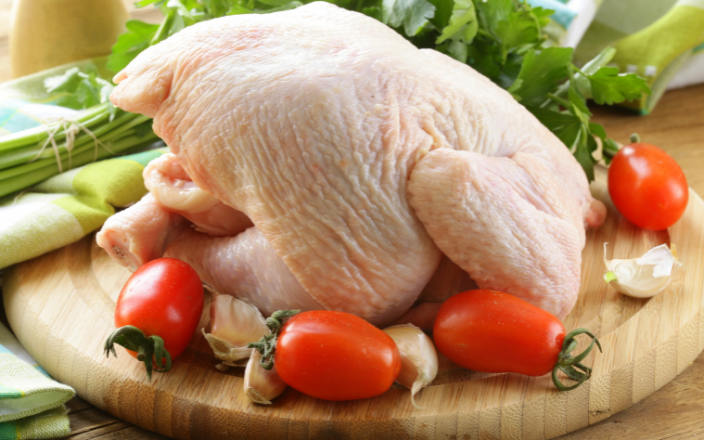Content available at: Tiếng Việt (Vietnamese)
The low collagen content in poultry meat is a positive factor as it decreases the digestibility of the meat.
- Meats of all types contain fats, especially saturated fats.
- Their consumption is therefore potentially associated with an increase in the intake of these nutrients and the corresponding negative effect on health, however, the most important thing is not to exceed the recommendations and to take into account the composition of fatty acids provided by each food.
- Fat provides essential fatty acids (linoleic and alpha-linolenic acids) and lipophilic vitamins (A, D, E and K), represents the major source of energy, promotes satiety by delaying gastric emptying and for the same reason, decreases the bioavailability of carbohydrates and therefore the glycemic response and finally, fats promote taste, smell and texture of food.
The skin increases the caloric content of the chicken by 25 to 30% due to the presence of fat. Considering the above, the removal of the skin can favor a significant decrease in the fat content of chicken. The fat content in the leanest cuts of chicken, such as the breast, is only 1%, being higher in the wings, especially if they have skin (17%). When compared to other types of meat, poultry meat has the lowest fat content.
Other nutritional aspects
- The fat composition of poultry is favorable because it includes significant amounts of monounsaturated fatty acids (only one third is made up of saturated fat) and when compared to fats of sheep, cattle and pig origin, there is a greater contribution of polyunsaturated fats, especially Omega 6 and arachidonic acid.
- Due to the mainly vegetable origin feed given to chickens, they are also a source of Omega 3, which is important especially in cultures where fish intake is not so high.
- Cooking and heating usually have minimal effects on the nutritional profile of meats and correspond mostly to the concentration of nutrients (including fat) and a decrease in water content.
- The carbohydrate content of chicken is very low. Sugars are represented in muscle glycogen, but much of this is lost during the slaughter process.
- Meat represents a very good source of most hydrophilic vitamins.
- B vitamins such as niacin, vitamin B6 and pantothenic acid in chicken are similar to those in other types of meat and do not decrease significantly during cooking.
- Chicken is a very good source of niacin.
- Chicken is also a good source of iron while its sodium content is very low.
- Additionally, chicken meat is a very good source of selenium.
Sources: Available upon request

